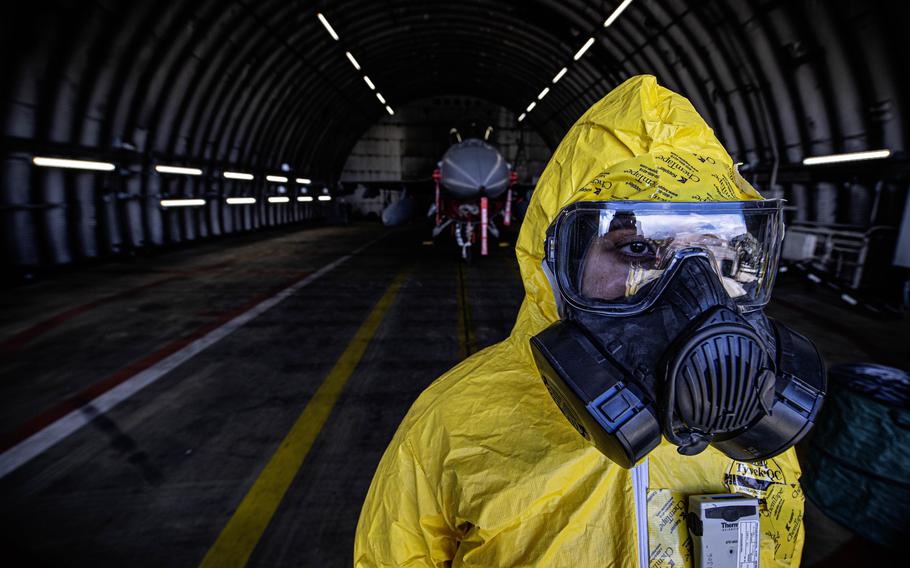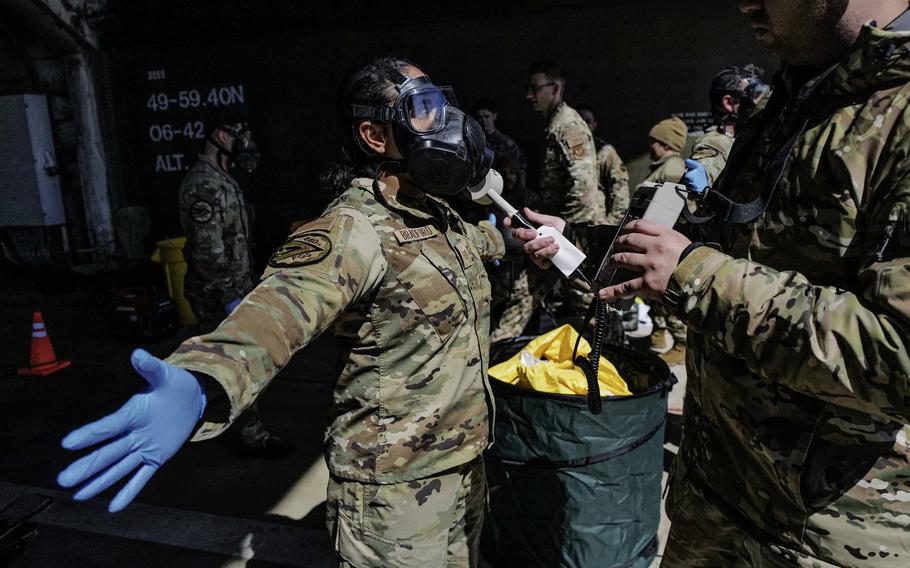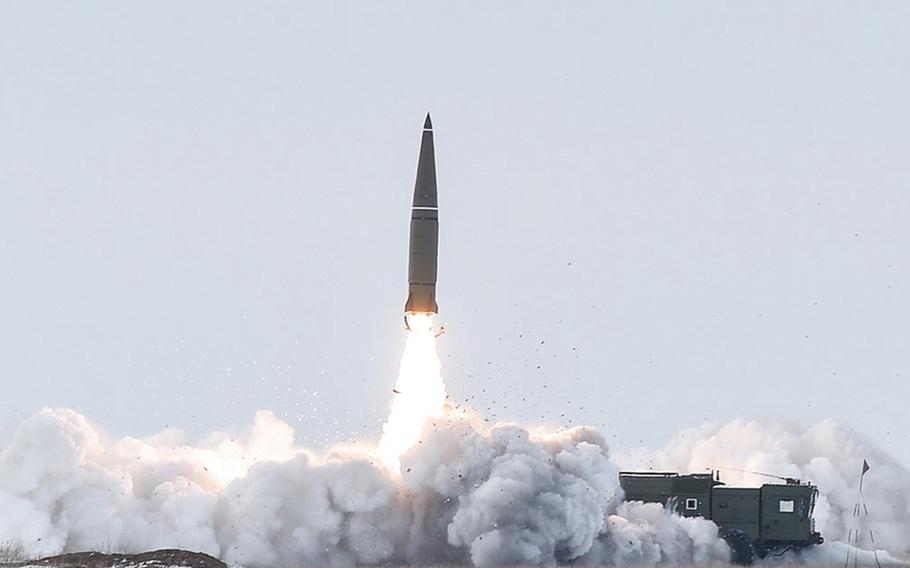
Tech. Sgt. Kayla Bradford waits for a radiological assessment on an F-16 Fighting Falcon during exercise Radiant Falcon on April 24, 2024, at Spangdahlem Air Base, Germany. The Kremlin announced Monday that it will conduct nuclear weapons drills, but Pentagon officials dismissed the idea of an elevated threat. (Alexander Riedel/Stars and Stripes)
The U.S. military isn’t adjusting its nuclear force posture in response to new saber-rattling from Russia, American officials said this week following the Kremlin’s announcement that it will carry out strike drills in “the immediate future.”
“This is an example of the kind of irresponsible rhetoric that we’ve seen from Russia in the past,” Pentagon spokesman Maj. Gen. Pat Ryder told reporters Monday. “It’s completely inappropriate given the current security situation.”
Ryder’s comments came hours after Moscow announced that it will launch drills that simulate missile strikes with battlefield nuclear weapons.
Tactical nuclear weapons deliver a smaller yield than strategic nuclear weapons and are intended to clear out opposing forces in a more constrained area.
The drills are intended to send a signal to European leaders whom Russia’s defense ministry on Monday accused of escalating tensions in recent days.

Staff Sgt. Christopher Richardson, right, inspects Tech. Sgt. Kayla Bradford with an ADM-300 survey meter, a crucial step in assessing her exposure to simulated radiological elements, during exercise Radiant Falcon on April 24, 2024, at Spangdahlem Air Base, Germany. The Kremlin announced Monday that it will conduct nuclear weapons drills, but Pentagon officials dismissed the idea of an elevated threat. (Alexander Riedel/Stars and Stripes)
The Kremlin was likely referring to French President Emmanuel Macron, who has suggested that French troops could have a role to play in Ukraine to support Kyiv in the war against Russia.
British Foreign Secretary David Cameron also has sharpened his rhetoric, saying that he backed the idea of Ukraine using missiles supplied by the the U.K. to strike inside Russia.
The aim of the Kremlin’s nuclear exercise is to “unconditionally ensure the territorial integrity and sovereignty of the Russian state in response to provocative statements and threats by some Western officials,” the Russian Defense Ministry said.
The drills will involve missile formations from Russia’s Southern Military District, whose headquarters are in Rostov-on-Don, and will incorporate aircraft and naval forces.
State Department spokesman Matthew Miller said Monday that Russia’s nuclear rhetoric has been “reckless and irresponsible” throughout the Ukraine conflict.
“That said, we have not seen any reason to adjust our own nuclear posture in response to these announcements, nor any indications that Russia is preparing to use a nuclear weapon in Ukraine,” Miller said.
Since its full-scale invasion of Ukraine in February 2022, Russia has made repeated nuclear threats. The situation has become cause for concern among top U.S. military officials.

Russia test-launches an Iskander-M ballistic missile at the Kapustin Yar complex in 2018. The Kremlin announced Monday that it will conduct drills that simulate missile strikes with battlefield nuclear weapons, but Pentagon officials responded that they won't adjust the U.S. nuclear force posture as a result. (Russian defense ministry)
Last month, U.S. European Command’s Gen. Christopher Cavoli said the United States needs to revive lines of communication in place during the Cold War that helped both countries avoid nuclear conflict.
“We could read each other’s signals. We knew how to send signals to each other,” Cavoli said during an April 8 congressional hearing. “Almost all of that is gone now.”
In the meantime, the U.S. military has stepped up efforts in Europe to prepare for potential nuclear confrontation.
For example, an F-16 fighter wing at Spangdahlem Air Base in Germany recently practiced how to safely receive and relaunch aircraft exposed to nuclear radiation.
The drills, a first at that base, dealt with a wide range of technical matters that would be required should the wing need to engage in a counterstrike mission after an adversary had used a tactical nuclear weapon against an ally.
While Air Force officials said the training wasn’t tied to current events, such drills are nonetheless new to Europe and come at a time when concerns about Russian nuclear threats are at a post-Cold War high.